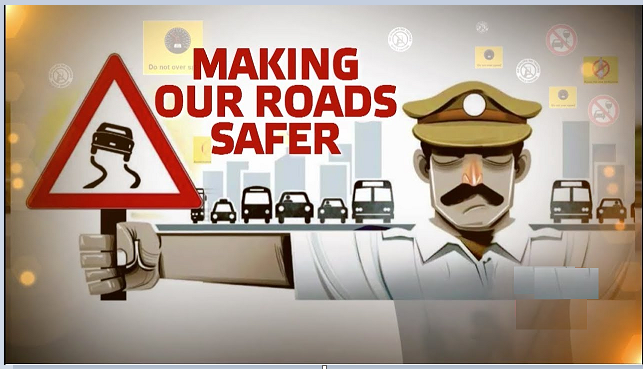
- India has just 1% of the world’s vehicles but accounts for nearly 11% of the global road accident & 10% of road crash victims worldwide.
- These alarming statistics have been pointed out in a World Bank Report titled “Traffic Crash Injuries And Disabilities: The Burden on India Society” prepared in collaboration with the NGO-Save Life Foundation.”.
- Releasing the report the Union Minister for Road Transport & Highways and the Minister of Micro, Small and Medium Enterprises, Nitin Gadkari stated the road accidents scenario in India are more dangerous than the ongoing pandemic.
- The accident cost is a tremendous burden on society and the country as the estimated cost of 1 death in a single road accident is around ₹ 91 lakh. The financial impact of crash is much more on the poorer households.
Key finding of World Bank report:
- Social Impact
- There are more fatalities from road crashes among poor families: The report looks at economic and socio economic burden and how poor people bear that burden disproportionately.
- The socio-economic burden of road crashes:The Report looks into 2 respondent category namely: Low income households and high income households. 75% of Low Income household responded that there was a decline in their total house income post-crash and also reported approximately 7 months of income was lost Whereas, the decline among high-income groups is only 54%. The medical cost was another outer pocket expenditure affecting them.
- Gendered impact of road crashes: Chief wage earner in household mostly male respondents are victims of road crash leaving burden on women who face burden of coping up with either finding new job or dip in nutrition needs, time poverty or make tough choices in education of their children. About 50% of women were severely affected by the decline in their household income after a crash, 40% of women reported a change in their working patterns post-crash and 11% reported taking up extra work to deal with the financial crisis.
- Low awareness on Insurance Coverage: There is an asymmetry in insurance coverage. About 1/4th of respondents from high-income households (24%) said that they received compensation. Whereas, among poorer respondents, only 14% received compensation.
- Economic Impact
- Loss of demographic dividend: With 5 lakh road crashes per annum,in which 1.5 lakh people die and over 76.2% fertility in the most productive age group of 18-45 years, while comparing it to number of pandemic where over 70% fertility took place in the age group of over 65 years, which clearly means road safety today requires more regress attention. If we even reduce the death by 50% we could increase our GDP per capita by somewhere 20-25% in the next 2 decades.
What more needs to be done going ahead looking at the alarming statistics as far as road accidents are concerned?
- Transportation and many road safety agency can play a vital role in ensuring road safety as a whole. It is essential that various agencies including the traffic police, state transport or central government come together to devise a policy approach and take it up on a mission mode and set up an effective institutional mechanism around this that we lack at the moment.
- Post-crash care allowing victim to reach to the hospitals at the earliest and innovate at this point of time in terms of urban design road transport or in terms of moving towards intelligent transportation systems. So the idea is to make roads safer for people to walk, cycle.
- The state of Tamil Nadu is doing a commendable job in which, looking at the data back in 2014 more than 15,000 people were dying every year due to road crashes but now in 2019 the road deaths have fallen to 10,000 which is a reduction of over 25%.
What is it the State of Tamil Nadu has done right that the other States also need to emulate?
- Currently Institutions are focusing on mobility of the people, that is to mobilize them from one place to another, so speed have to be increased for it to reach quickly due to which in that process the safety is hampered. So if the safety of road infrastructure issues are not addressed properly then accidents are prone to occur.
- Looking at the data it shows that around 50% of victims are two wheelers, cycle users and pedestrians and these people belong to the group of marginally low income and the impact of accident on them is much more higher than the high income making them most vulnerable.
- Therefore it is essential that while focusing on mobility it is equally important to concentrate on these groups by proper road safety infrastructure and rules.
- Conducting Road safety audits on existing roads and roads for construction, identifying block spots prone to road accidents and rectifying it.
- Finally if looking up at the emergency care setup in total that would be very helpful and that is something which Tamil Nadu has focused on and improved their response time post-crash.
How can these recommendation be looked up by the government and incorporated in their policy?
- The biggest failure we look at and the area that we need to be work upon is the urban design that India has followed has largely been inputted from the western countries.
- Looking at the 2011 census and travel pattern of India 70% of population is travels on foot or cycles, 15-20% on motor cycles, but our roads are actually designed for people travelling in the cars. In such urban or rural spaces design there are no dedicated lanes for cyclist or footpaths. So there is a strong disconnect in the way of people travelling and the mobility we want to achieve and the kind of urban infrastructure that we are developing.
- So at this point of time looking at the vehicles sales as well 85% of them are 2 and 3 wheelers but the roads been developed do not cater to it and at the same time it is essential that we do not directly jump to a car based system since our infrastructure and roads and landmass cannot sustain that since India has only 18 cars per 1000 population at currently and there is already a havoc and conjunction created in our cities leading to accidents.
- If focusing on mobility and speed public transport is the perfect way to go along and the report has rightly captured there is a huge inequality in the burden of road crashes that falls onto the low income households. So if we move to a more equitable system in which public transport and mass transit is included in that movement we will be able to create safer roads and more just transition.
- Along with that interventions in the road safety which is probably capacity building ,traffic polices, movement ,adapting intelligent transport systems measures, improving road design, identification & removal of blackspots, we have to also look into mobility patterns that we are trying to build and where is it leading us to. So the idea is to make the road as a whole more conducive, safe and more equitable. And for that there are institutional reforms and plethora of Para time shift that we need to take forward. So India needs to focus more on public transportation system rather than a car based system.
- If your taking pedestrians the infrastructure must have sufficient emphasis on building footpaths, foot over bridges and subway equally. Two wheelers are the highest victims prone to crash since the speed variation between 2 & 4 wheeler vary significantly.
Steps Taken
- Brasilia Declaration on Road Safety (2015): India is a signatory to the Declaration in which countries plan to achieve the Sustainable Development Goal 3.6. to half the number of global deaths and injuries from road traffic accidents by 2020.
- The United Nations (UN) declared 2011-2020as the decade of action for Road Safety.
- Motor Vehicles Amendment Act, 2019: The Act hikes the penalties for traffic violations, defective vehicles, juvenile driving, etc. It provides for a Motor Vehicle Accident Fund, It also provides for a National Road Safety Board, to be created by the Central Government through a notification.
Way forward
- We need a comprehensive approach, following all ease road safety.
- Enforcement systems to ensure various risk factor that are there whether it’s speeding or non-usage of safety devices.
- There is a need to institutionalize post-crash emergency care and make health infrastructure and coverage more accessible and inclusive.
- The central and state governments should provide a social security net for crash victims from low-income households through state support.
- Policy-oriented approaches are needed where government should create schemes to increase insurance coverage and penetration for low-income households.
